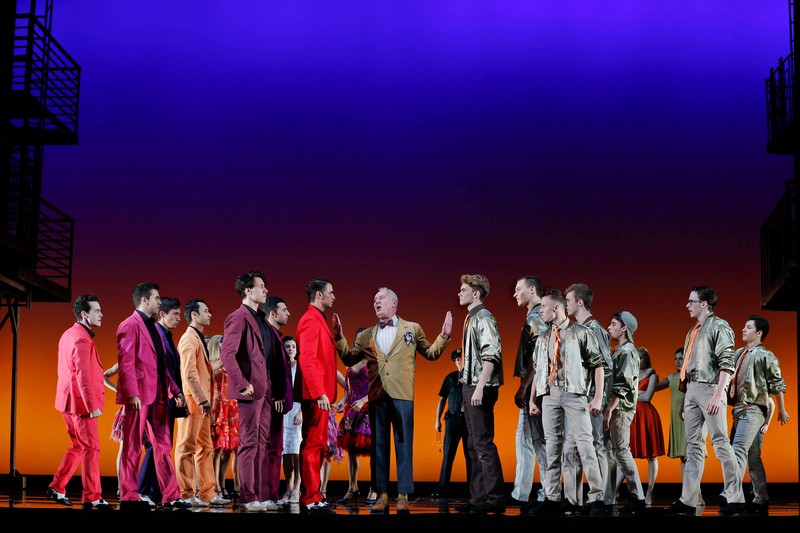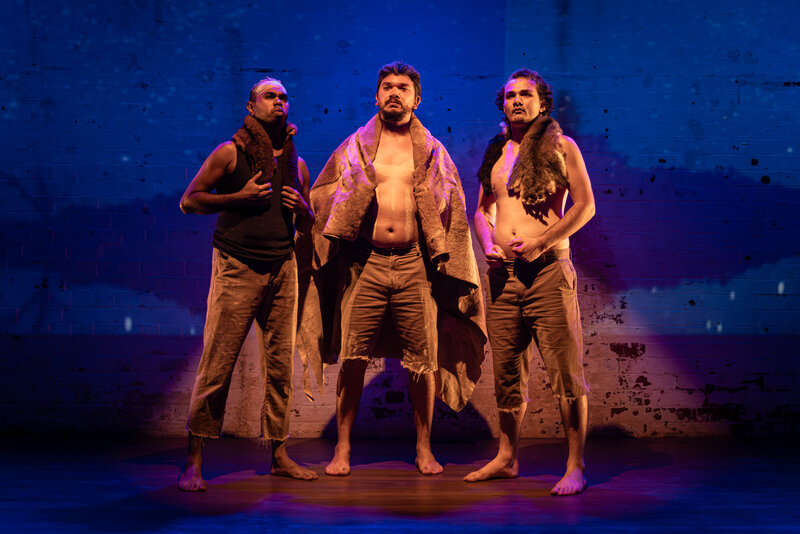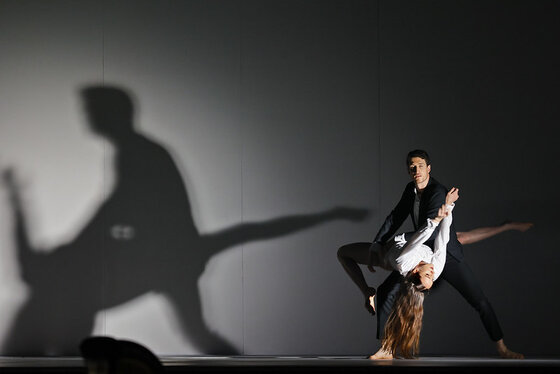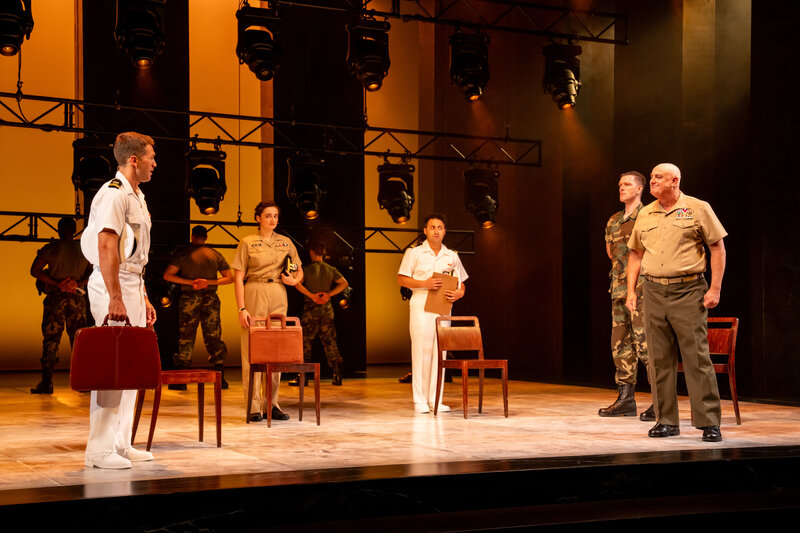West Side Story debuted in 1957 on Broadway. Four genius artists somehow subdued their egos to collaborate as an ensemble to produce one of the great works in the musical theatre canon: Leonard Bernstein, Stephen Sondheim, Arthur Laurents and Jerome Robbins. A motion picture version arrived in 1961 winning 10 Academy Awards – it created a permanent number of indelible moments.
This production, led by American choreographer/director Joey McKneely, is the second version of this iconic work presented by Opera Australia (OA) this year. The other was the Handa-on-the-Harbour in February. This design is by Paul Gallis, utilising some magnificent historic photographs of 1950’s New York to sustain the visual context for the location of the work with two portable side towers/constructs of quasi-scaffolding to represent the housing of the denizens of this world at war: two gangs of youth contesting their right to territory, The Sharks and the Jets – white ethnic second generation Americans versus recent Puerto Rican immigrants. Arthur Laurents used the framework of William Shakespeare’s Romeo and Juliet, and then bent it for these artists needs to tell a contemporary story.

From the first musical notes from the OA orchestra led by Donald Chan there is a thrilling nostalgia awakened in all of us in the audience and the words of the famous songs are shaped silently in our mouths alongside the performers on the stage. The great demand of this work is that the triple skills of the musical theatre performer; that of been able to sing, dance and act, is required from almost every character on the stage (the older background characters are excluded).
The OA company is a very young one with a great number of the artists making their debut (first) outing onto the professional stage. One can see these artists in their singing and, especially, dancing, performing at optimum levels of skill. They are striving with fixed concentration to ‘conquer’ the demands of the work and one can feel that they have little or no reserve and it is that potent visible fragility that undermines the impact of this show. This company is good but not great. They are ‘kids’ at the start of their careers – the OA claims that casting these youngsters fulfills the age requirements of these gang members and thus claims a positive credence whilst lamenting the usual casting of older (more experienced) performers in the gang – but I believe the film casting of the gangs despite the discrepancy in the age look works more than convincingly. The experience of those actors/singers/dancers does not allow any doubts of credibility from entering our aesthetic appreciation and belief in the drama of the work. I reckon we lose out in not having consistent assured quality in the casting of this OA production.
They, of course, are not assisted by the design side pieces that crimp the open dance spaces and inhibits full flight and even complete take-off in the choreographic demands – the Joan Sutherland stage space is so ‘tiny’ and becomes an obvious flaw in the aesthetics of this production in this theatre.
The best of the performances in this production comes from Chloe Zuel in the dynamic role of Anita, in all three demands of the musical theatre artist. She is outstanding. Of the straight acting roles, Ritchie Singer, as Doc, gives a performance of some passionate insight.

In this performance Todd Jacobsson, the scheduled lead performer for Tony was replaced by Daniel Assetta, who gave an assured but nervous interpretation and showed some uncertainty in his top notes (at least early in the night) and a lack of blending skills with the rather noisy overwhelming operatic sound (or is it a sound design mixing problem from the desk of Matt Grounds?) coming from his Maria, sung by Sophie Salvesani – who is a little short of the top dramatic acting skills to convince us and/or move us, in the tragic climax of the work. The climax is, rather, all dramatically expressed as routine from all the company on the stage (except the work of Doc), which, unfortunately, robs this West Side Story of its powerful statement. It limits the profound influence of the drama of the creators’ intentions. The musical scoring that one remembers from the Robert Wise film is rushed through here by Mr Chan and does not allow the tragedy to pierce the audience’s consciousness about the futility of violence. (The speedy tempo hiding the weakness of the company’s acting skills?)
If you have never seen West Side Story, this near-faithful revival of the original work, led by Mr McKneely, will still impress you, for this is a theatre work that is up there as one of the greats. Its greatness lies with the inviolable vision of the four creators. If you have seen it and love it from before you may be underwhelmed.
Opera Australia’s West Side Story plays in the Joan Sutherland Theatre at the Sydney Opera House until 6 October 2019.
Kevin Jackson
For more of Kevin Jackson’s theatre reviews, check out his blog at Kevin Jackson’s Theatre Diary
Other reviews you might enjoy:
- West Side Story (Opera Australia) – theatre review
- In the Heights (Hayes) – theatre review
- Wizard of Oz Arena Spectacular – national tour 2019-20

Kevin Jackson is a Sydney-based theatre-maker and writer. He contributes to The Blurb on theatre





